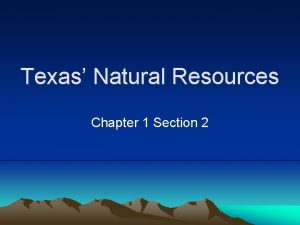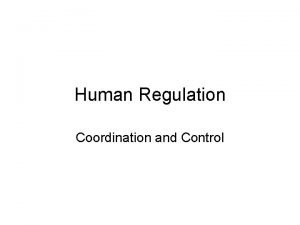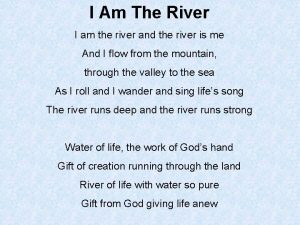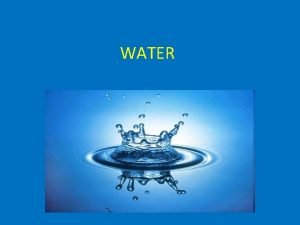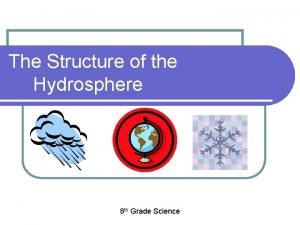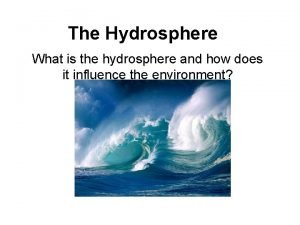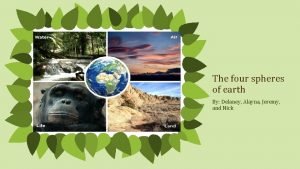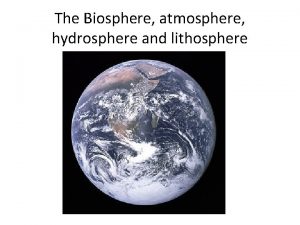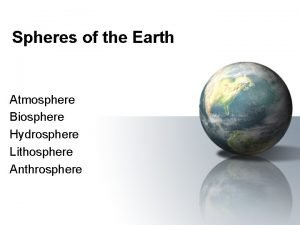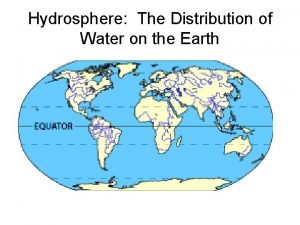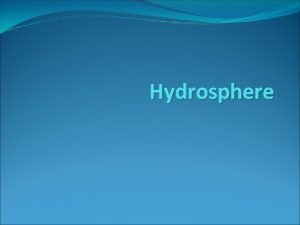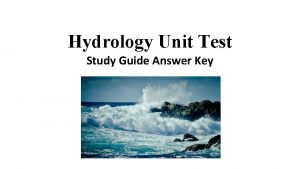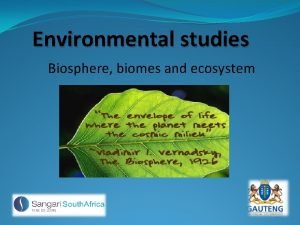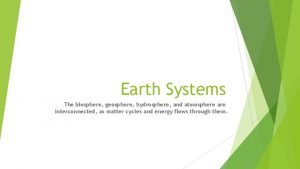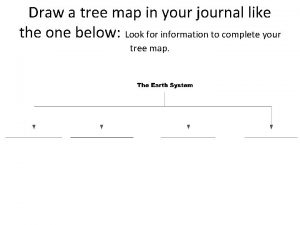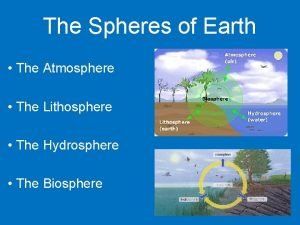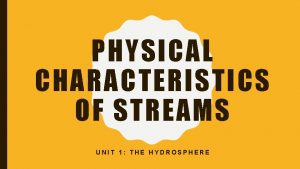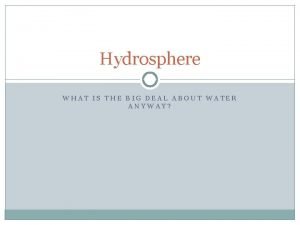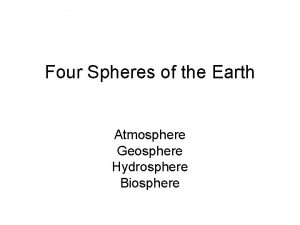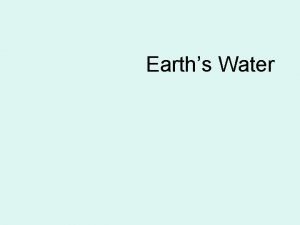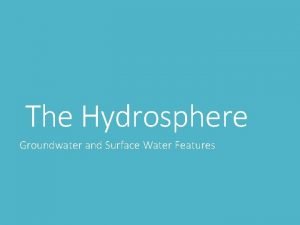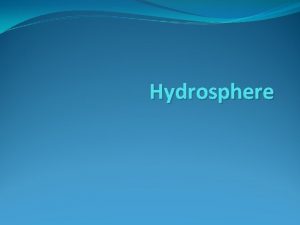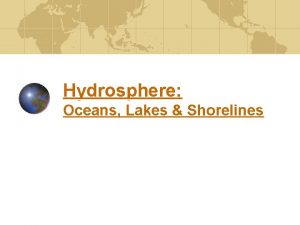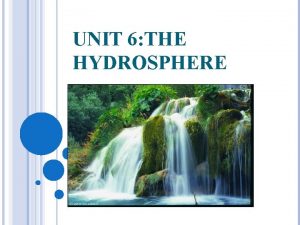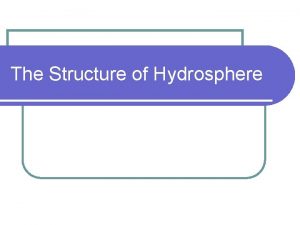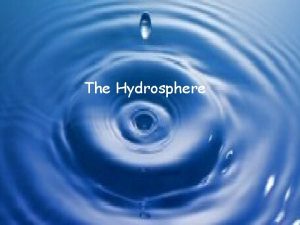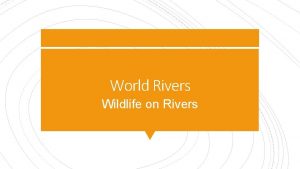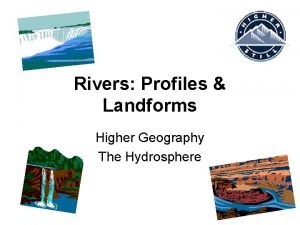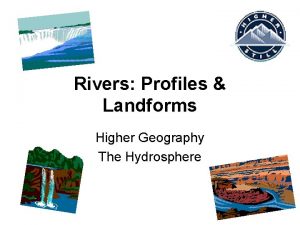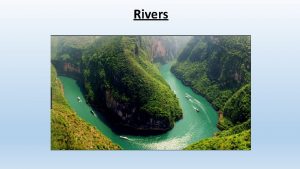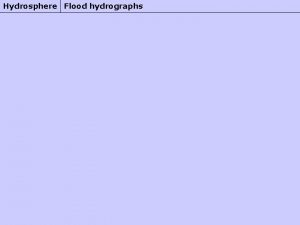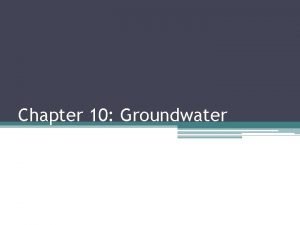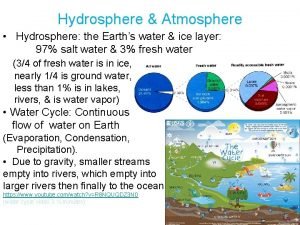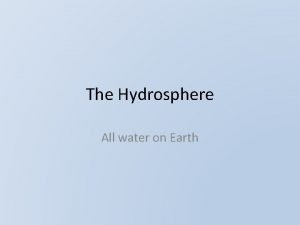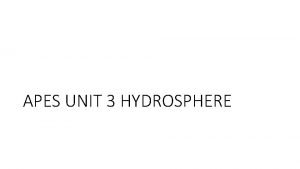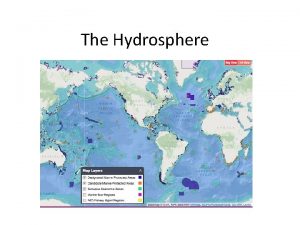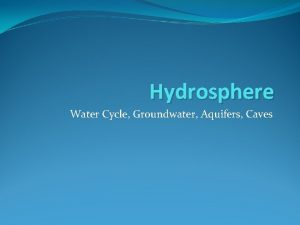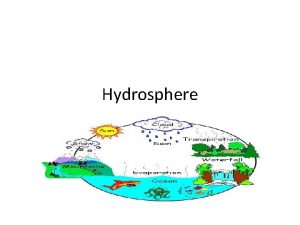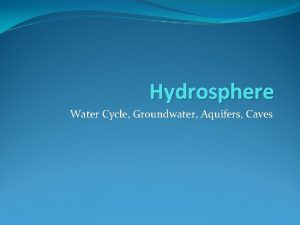Hydrosphere rivers River Regulation Human Interactions with the
























- Slides: 24

Hydrosphere: rivers





River Regulation Human Interactions with the Hydrosphere

http: //biophysicalinteraction. weebly. com/issu es-in-the-hydrosphere 1. html

Regulation The NSW Government recognises that our rivers and groundwater systems are threatened by over-extraction of water. Water sharing plans have been developed to establish rules for sharing water between the environmental needs of a river or aquifer and all other water users, including town and rural water, industry and irrigation. The NSW Office of Water monitors the effects of water sharing plans to determine whether they are succeeding in improving the health of our rivers and aquifers.

NSW Office of Water To manage our water ways effectively, it is important that there is understanding of the reasons for any changes in rivers, and know how to use that knowledge to improve the management of water resources. Monitoring not only assesses how rivers are responding to environmental flows, but also investigates how different patterns of water flow affect the way rivers function. The NSW OW also monitor rivers and floodplains to ascertain their health. They are interested in the river's physical form, its fringing vegetation and what sort of fish and insects live in rivers. All this information is then used to gauge the health of rivers and floodplain systems. As scientific understanding increases, the NSW OW will be able to more effectively allocate water to the environment and other water users, and better evaluate the performance of water sharing plans. Scientific feedback makes efficient sharing of water possible.

Hunter Catchment Area The Hunter catchment is east of the Great Dividing Range around 100 kilometres north of Sydney. It is bound by the Manning and Karuah catchments in the north, and by the Lake Macquarie and Hawkesbury-Nepean catchments in the south. It comprises the region popularly known as the Hunter Valley. Newcastle, the second largest city in NSW, is located at the mouth of the Hunter River. Major towns in the catchment are Maitland, Singleton, Cessnock, Muswellbrook and Raymond Terrace. The Hunter catchment supports a diversity of landscapes, from high mountain ranges to broad fertile floodplains and extensive estuarine areas. In the west of the catchment there are large areas of wilderness and national park.


The Office of Water monitors the conditions of river systems in NSW and provides regular updates on water levels, rainfall, water temperature and electrical conductivity 4: 44 PM 22/03/2017

Major water storages The Hunter is regulated by two major headwater storages, as well as a number of minor dams. Glenbawn Dam on the upper Hunter River, and Glennies Creek Dam on Glennies Creek supply water for irrigation, town water, stock and domestic supplies, as far downstream as Maitland. The volume and pattern of flows in the Hunter River system have been significantly altered by the construction and operation of these storages. Lostock Dam is a smaller storage that provides a regulated water supply to users along the Paterson River. Chichester Dam in the upper Williams catchment, and Grahamstown Dam near Raymond Terrace are operated to supply town water to the lower Hunter region. Major water users The Hunter River supports a large population and a diverse range of important water users. Water users include Hunter Water Corporation, which supplies the City of Newcastle; local councils; power generators, which provide most of the electricity used in NSW; major coal mines, that make Newcastle the largest coal exporting port in the world; other heavy industry; horse and cattle studs; and irrigated agriculture, such as the world renowned Hunter Valley wineries and dairy farms.

Key water management issues The volume and pattern of flows in the Hunter River system have been significantly altered by the construction and operation of Glenbawn and Glennies Creek dams. Large volumes of water are taken and stored for power station use in Lake Liddell. Water sharing plans have been developed to address environmental requirements downstream of the major dams, and to ensure sustainable use of water by all water users. The Hunter's climate is highly variable, with periods of severe drought and flood. There has been extensive modification of the lower Hunter River's floodplain, in particular extensive construction of flood diversion works following the major floods of the 1950 s and 1970 s. The Hunter region, and particularly the lower Hunter catchment, supports a high level of urban and industrial development which has affected water quality. In the upper catchment significant land clearing has resulted in erosion and salinity problems. Diagram of the Hunter River catchment showing the major rivers and the locations of the surveyed sites. Dashed lines designate rivers that have undergone major geomorphic adjustment • fresh water mussel species)


The Mighty Mekong The Mekong flows through six countries on its journey from the source on the Tibetan Plateau to the ocean.

The Mekong’s water gives life to the people and ecosystems of the Lower Mekong Basin. Although the quality of water and related resources in the basin is currently good, experts have particular concerns. Among them is the high nutrient concentration in the Mekong Delta, which can diminish soil quality. Other parts of the Mekong are progressively at risk of environmental degradation as the river is faced with rapid industrialisation and the impacts of climate change. During the strategic cycle 2011 -2015, the Mekong River Commission’s Environment Programme worked to support cooperation among MRC Member Countries to secure a balance between economic development, environmental protection and social sustainability within the Mekong region. In response to the Mekong’s changing environment, the Programme worked to ensure that basin management and development is guided by up to date environmental and social knowledge http: //environment. nationalgeographic. com/environment/freshwater/lessons-from -the-field-mekong-giant-fish/

Managing Mekong Health As the river is the lifeline to millions of people, it is important for all of them to understand the relationship between their everyday lives and the environment they live in. The Mekong River Environment Programme manages testing kits in various regions and feeds back the information to governments. When the MREP conducts a survey or monitoring activity, the communities they work with gain a greater understanding of how their daily activities impact the river’s quality, and in return, their well-being.

http: //biophysicalinteraction. weebly. com/issu es-in-the-hydrosphere 1. html



https: //www. internationalrivers. org/campaigns/mekong-lancang-river http: //www. worldwildlife. org/places/greater-mekong

CANVAS WHAT ARE THREATS? WHAT WWF IS DOING? HOW ARE THE FOUR SPHERES INTERACTING IN THE MEKONG?

 Why are some rivers in texas called “wrong way” rivers?
Why are some rivers in texas called “wrong way” rivers? Human regulation
Human regulation Green river (duwamish river tributary)
Green river (duwamish river tributary) I am the river and the river is me
I am the river and the river is me Hydrosphere facts
Hydrosphere facts Structure of the hydrosphere
Structure of the hydrosphere Images of hydrosphere
Images of hydrosphere Biosphere defenition
Biosphere defenition Biosphere
Biosphere How does biosphere interact with hydrosphere
How does biosphere interact with hydrosphere Water distribution on earth
Water distribution on earth Hydrosphere includes *
Hydrosphere includes * Hydrology test answers
Hydrology test answers Earth four spheres
Earth four spheres Hydrosphere layers
Hydrosphere layers Geosphere
Geosphere Hydrosphere drawing
Hydrosphere drawing The hydrosphere and lithosphere meet
The hydrosphere and lithosphere meet Characteristics of hydrosphere
Characteristics of hydrosphere Whats hydrosphere
Whats hydrosphere Hydrosphere mind map
Hydrosphere mind map Biosphere and geosphere
Biosphere and geosphere Stream load
Stream load Water permeable
Water permeable The hydrosphere includes
The hydrosphere includes
